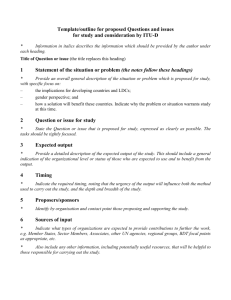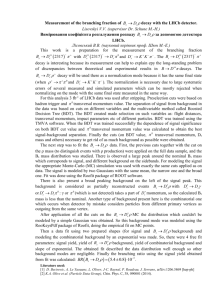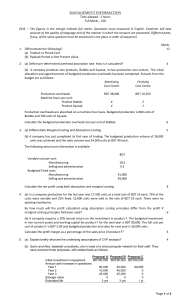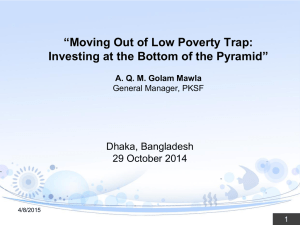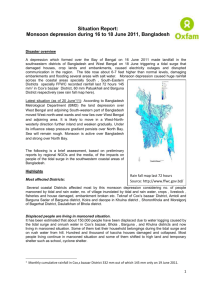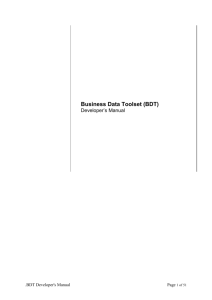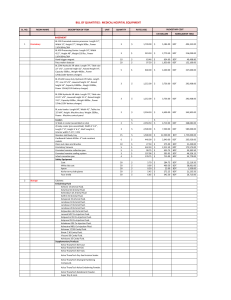Leaders Make it Happen
advertisement
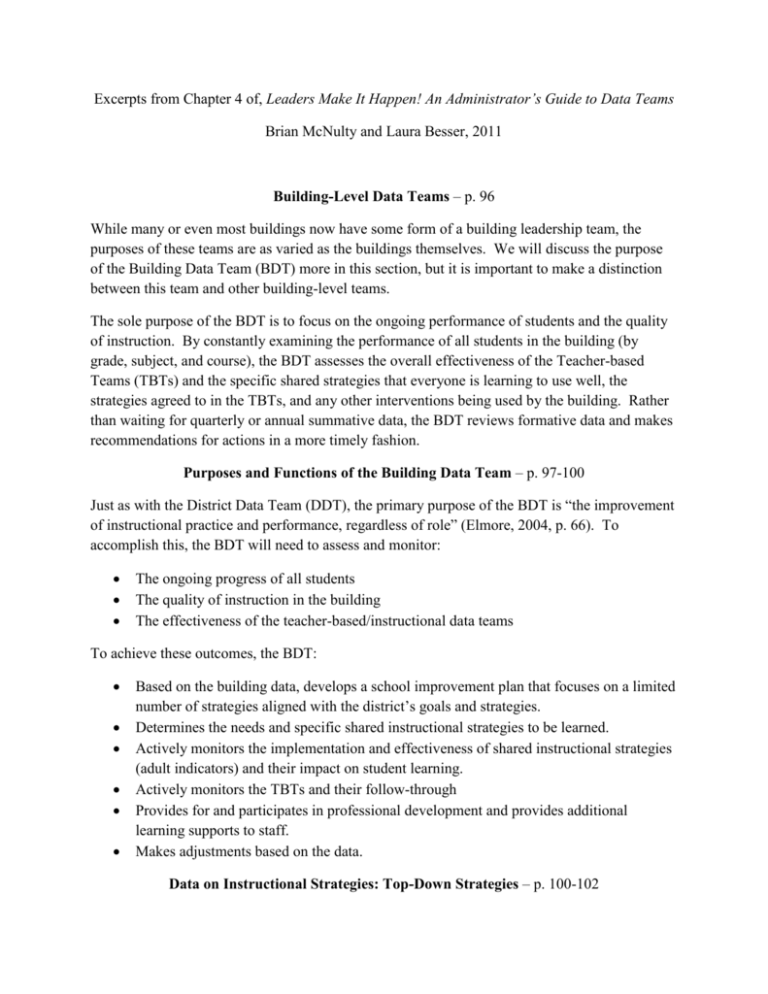
Excerpts from Chapter 4 of, Leaders Make It Happen! An Administrator’s Guide to Data Teams Brian McNulty and Laura Besser, 2011 Building-Level Data Teams – p. 96 While many or even most buildings now have some form of a building leadership team, the purposes of these teams are as varied as the buildings themselves. We will discuss the purpose of the Building Data Team (BDT) more in this section, but it is important to make a distinction between this team and other building-level teams. The sole purpose of the BDT is to focus on the ongoing performance of students and the quality of instruction. By constantly examining the performance of all students in the building (by grade, subject, and course), the BDT assesses the overall effectiveness of the Teacher-based Teams (TBTs) and the specific shared strategies that everyone is learning to use well, the strategies agreed to in the TBTs, and any other interventions being used by the building. Rather than waiting for quarterly or annual summative data, the BDT reviews formative data and makes recommendations for actions in a more timely fashion. Purposes and Functions of the Building Data Team – p. 97-100 Just as with the District Data Team (DDT), the primary purpose of the BDT is “the improvement of instructional practice and performance, regardless of role” (Elmore, 2004, p. 66). To accomplish this, the BDT will need to assess and monitor: The ongoing progress of all students The quality of instruction in the building The effectiveness of the teacher-based/instructional data teams To achieve these outcomes, the BDT: Based on the building data, develops a school improvement plan that focuses on a limited number of strategies aligned with the district’s goals and strategies. Determines the needs and specific shared instructional strategies to be learned. Actively monitors the implementation and effectiveness of shared instructional strategies (adult indicators) and their impact on student learning. Actively monitors the TBTs and their follow-through Provides for and participates in professional development and provides additional learning supports to staff. Makes adjustments based on the data. Data on Instructional Strategies: Top-Down Strategies – p. 100-102 Once the building moves to implementation of its strategies, there are two other data sources that the BDT needs to review in an ongoing way: implementation data and effectiveness data. Implementation Data As mentioned in Chapter 1, one of the biggest challenges that most schools and districts face is the lack of deep implementation. In our work with hundreds of districts, the ability to implement deeply and effectively has proved elusive for most districts and buildings. Whether this is due to a lack of accountability, or just a lack of planning, most districts and buildings do not collect, analyze, or act on their own follow-through of their improvement strategies. Consequently, they rely on their own or others’ impressions, beliefs, or intuitions, and as a result, leaders never accurately assess how effective they are with their own implementation. This is a critical gap in data collection. The BDT should collect data frequently on how well the improvement strategies are being implemented. Depending upon the strategies chosen, this could include a variety of data sources, such as walk-throughs, lesson plan reviews, student work samples, etc. This will usually require the development of some form of data collection tool such as rubrics, observation checklists, and so on. At a minimum, however, the principal, along with members of the BDT, should decide what data need to be collected, how to collect these data, and how often to collect and report the data back to the staff on the depth and quality of implementation. Reporting back to the staff on a frequent basis should become a regular form of feedback regarding your progress. Effectiveness Data While it may be appropriate for the BDT to use state assessment results to make initial decisions about building goals and strategies, the BDT will need ongoing data to determine the effectiveness of its strategies and the progress of students and the school. Many districts use quarterly benchmark assessments as a part of this ongoing data review; however, over time it will become more important that the BDT guide the progress of the TBTs in the use of common formative assessments. Because we know that “there (is a) greater emphasis in higher performing schools on ensuring that staff systematically monitored student progress” (Robinson, 2007, p. 14), this should be a high priority for most BDTs. This book is not the place to go into detail on the use of common formative assessments except to say that there is clear consensus in the research on the power of using formative assessments, and especially common formative assessments. In fact, recent research reviews have identified common formative assessments as the single most powerful strategy in improving student achievement and teacher learning (see Shepard, et al., 2005; Ainsworth and Viegut, 2006; Marzano, 2007; Hattie, 2009). Data on Instructional-Based Data Teams: Bottom-Up Strategies The BDT also needs to collect, analyze, and act on data regarding the effectiveness of the TBTs. If the TBTs are following the process outlined in the following chapters, then there should be minutes available from each team to review. There also should be some common assessment data that are available to review, as well as the specific instructional practices team members have agreed to implement in their classrooms. The principal and the other members of the BDT should monitor and collect data on the follow-through of these practices in the classroom. These data should be presented and reviewed by the BDT. In addition, because many of the members of the BDT will also be members of TBTs, they should have first-hand knowledge of how well the teams are functioning. These members should report at each BDT meeting on the specific work of each of their teams, including the common student needs being addressed, instructional practices they are committed to using, how they will assess student learning, and how effective the teams have been in following the process. They should also identify if the teams need interventions or supports. Using data at the building level serves many purposes; one of the primary purposes, though, is to personalize learning for every student. Data alone will not cause teachers to change their practices. It is only when teachers personalize this data to their own students that they begin to “own” the data. Monitor and Provide Feedback and Support – p. 107-108 One of the biggest gaps in implementation for most schools and districts is the lack of ongoing monitoring and feedback. It is impossible to assess how well the instructional practices or the TBTs are being implemented without some form of frequent monitoring. White (2009) found that “schools with explicit monitoring achieved at higher levels than schools where monitoring was assumed or implied” (p. 12). He found that schools and districts that made significant progress specifically addressed a number of monitoring issues, including: What would be monitored? (What data need to be collected on how well the strategies are being implemented, and what data will be collected to show if the strategy is making a difference in student performance?) How will the practices be monitored? (Observations, artifacts, reports, etc.) When and how often will the practices be monitored? Who will be responsible for monitoring and reporting the progress? The BDT will need to develop implementation indicators and monitoring processes that identify what effective implementation looks like and address the questions in the list. The most important thing for the BDT to remember about monitoring is that monitoring is a tool to provide feedback to the staff and the BDT regarding their progress in implementation. Fullan (2008a) cautions us that negative monitoring does not work! If monitoring is seen as a way to catch and persecute people, it will only increase resistance. The purpose of monitoring is to help staff see where they are in the implementation cycle and to give the BDT guidance on the right next steps and on what supports may be needed. Learn, Inquire, and Replicate Success All of this work is about learning. TBTs are meant to provide teachers with the opportunity to collectively reflect, adjust, and improve their teaching. The BDT serves a similar purpose except that its focus is on improving instruction throughout the entire building. The goal of both is to develop a continuous-improvement process that is grounded in inquiry, reflection, and action. Most schools do not have a well-established process for inquiring and learning from their improvement efforts except for the final analysis of whether what they chose “worked” or “did not work.” Traditionally, schools have not examined either the causes (i.e., what did the adults do or not do well?) or the effectiveness of the professional developments and supports provided. Without this happening, it is difficult for schools to learn or make progress. In Chapter 2 we discussed the concept of learning organizations and referenced Reeves (2006), who found that schools that were higher in inquiry performed three times higher than schools that had lower levels of inquiry. Having the ability as a BDT to answer the questions of “what is working, and why?” and “what is not working, and why?” is profoundly important to the building’s ability to make sustainable progress. If the BDT can learn from implementing focused instructional strategies and collaborative TBTs, then the BDT can refine and improve its implementation as the team moves forward.
